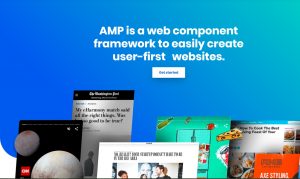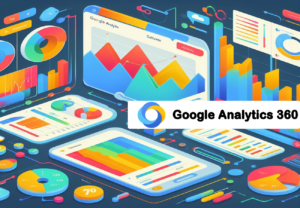In the digital age, social media has become a powerful tool in driving web traffic metrics. It connects people, fosters communication, and shapes public opinion. But did you know it also plays a crucial role in driving web traffic?
Let’s take a journey through the digital landscape. Here, social media platforms like Facebook, Twitter, Instagram, and LinkedIn dominate. They have billions of users worldwide. Every day, these users share, like, comment, and engage with content. This active engagement is what makes social media a potent tool for businesses and brands.
Now, imagine a business trying to increase its web traffic. In the past, they might have relied on traditional methods like search engine optimization (SEO) or paid advertising. But today, they have another powerful tool at their disposal: social media.
Overview of How Social Media Can Influence Web Traffic
So, how does social media influence web traffic? The answer lies in its ability to engage users and direct them to various websites.
Think about the last time you were scrolling through your Facebook feed. You probably came across a post from a brand you follow. Maybe it was a blog post, a product announcement, or a special offer. If that post caught your interest, what did you do? Most likely, you clicked on the link provided, which took you to the brand’s website.
That’s social media influencing web traffic in action. But it’s not just about driving traffic. It’s about attracting the right kind of traffic. Social media allows businesses to target their content to a specific audience. This means the traffic they gain from social media is more likely to be made up of individuals interested in their products or services.
Moreover, social media can also influence web traffic indirectly. Users may not always click on a link immediately. They might see a post, remember the brand, and visit the website later. Even if they don’t visit the website, they’re still more aware of the brand. This increased brand awareness can lead to increased web traffic down the line.
In this regard, social media plays a vital role in today’s digital landscape. It’s not just a platform for social interaction. It’s a powerful tool that businesses can use to drive web traffic. So next time you’re on social media, remember: every like, share, and comment can help drive traffic to a website. And that’s the power of social media.
The Influence of Social Media on Website Visits
Social media’s influence on website visits is a fascinating topic. It’s not just about the direct clicks from social media posts that lead to a website. The indirect influence is also significant.
Let’s delve into the statistics. Studies show that less than 1% of website visits come directly from a social media URL. This might seem minimal, but it doesn’t mean that social media’s impact is insignificant. In fact, 18% of website visitors acknowledge being influenced by social media to visit the site. This shows that while social media might not directly lead to a website visit, it plays a crucial role in influencing the decision to visit.
Case Studies of Successful Social Media Influence on Web Traffic
Now, let’s look at some case studies that illustrate the power of social media in driving web traffic.
- Fashion Nova: This online fashion brand has mastered the art of using social media to drive web traffic. They regularly post engaging content on their social media platforms, including Instagram, where they have over 19 million followers. Their posts often feature influencers wearing their products, which not only increases brand awareness but also drives traffic to their website.
- Airbnb: Airbnb uses social media to showcase their unique listings and experiences. Their Instagram account, with over 4.8 million followers, features stunning images of listings from around the world. Each post includes a link to their website, encouraging followers to explore more and book their next stay.
- BuzzFeed: BuzzFeed has a strong social media presence, particularly on Facebook, where they have over 11 million followers. They regularly post engaging content, including quizzes, listicles, and news stories, which drive significant traffic to their website.
These case studies show that with the right strategy, businesses can use social media to significantly increase web traffic. It’s about understanding your audience, creating engaging content, and making it easy for followers to visit your website.
Indeed, social media plays a significant role in driving web traffic. It’s not just about the direct clicks from social media posts. The indirect influence is also substantial. So, as you scroll through your social media feeds, remember that every post you see is a potential driver of web traffic.
Building Customer Loyalty and Satisfaction through Social Media
Social media is not just a tool for driving web traffic. It’s also a platform for building customer loyalty and satisfaction. Let’s explore this further. Customer loyalty is a measure of a customer’s likeliness to do repeat business with a company or brand. It is influenced by several factors, one of which is social media.
Social media allows businesses to engage with their customers on a more personal level. They can respond to comments, answer questions, and even resolve issues in real-time. This level of interaction shows customers that the business values them, which can increase loyalty.
Moreover, social media gives businesses a platform to reward loyal customers. They can offer exclusive deals, discounts, or rewards to their social media followers. These rewards can increase customer loyalty as they make the customers feel valued and appreciated.
Strategies for Improving Customer Satisfaction via Social Media
Customer satisfaction is another critical factor influenced by social media. Satisfied customers are more likely to become repeat customers, and they’re also more likely to recommend the business to others.
Here are some strategies for improving customer satisfaction via social media:
- Prompt Response: Customers appreciate a quick response. Try to respond to comments, messages, and reviews as quickly as possible.
- Quality Content: Regularly post content that is relevant and valuable to your customers. This can include product updates, helpful tips, or even behind-the-scenes looks at your business.
- Customer Involvement: Involve customers in your business. This can be done by asking for their input on new products, hosting contests, or featuring customer reviews and testimonials.
- Resolve Issues Publicly: If a customer has an issue, resolve it publicly so that other customers can see that you take their concerns seriously.
It’s worth noting that social media plays a significant role in building customer loyalty and satisfaction. By engaging with customers, offering rewards, and providing excellent customer service, businesses can use social media to not only drive web traffic but also to build a loyal and satisfied customer base.
Optimizing Social Profiles for Increased Web Traffic
In the digital age, having a social media presence is crucial for businesses. But it’s not enough to just have a profile on every platform. These profiles need to be optimized to attract and engage users, and ultimately, drive traffic to your website.
The bio section of your social media profile is one of the first things users see. It’s your chance to make a strong first impression and convey what your business is all about. A clear and distinct bio can catch the attention of your ideal audience and encourage them to visit your website.
For example, if you run a vegan bakery, your bio could be something like, “Baking the world a better place with our delicious, 100% vegan treats. Visit our website to place an order today!” This bio clearly communicates what the business does and includes a call to action to visit the website.
Tips for Profile Optimization Across Various Platforms
While each social media platform is different, there are some general tips for optimizing your profiles:
- Use Relevant Keywords: Include keywords related to your business in your bio and posts. This can improve your visibility in social media searches.
- Include a Link to Your Website: Most social media platforms allow you to include a link in your bio. Make sure to take advantage of this and direct users to your website.
- Use High-Quality Images: Use clear, high-quality images for your profile picture and cover photo. These images should represent your brand well.
- Post Regularly: Regular posting shows users that your profile is active and worth following.
- Engage with Your Audience: Respond to comments and messages promptly. This can improve your relationship with your audience and encourage them to visit your website.
Remember that optimizing your social media profiles is a crucial step in using social media to drive web traffic. With a clear and distinct bio and an optimized profile, you can attract your ideal audience and encourage them to visit your website.
Leveraging Social Proof for Web Traffic
In the world of digital marketing, social proof is a powerful tool. It’s the idea that people are more likely to take action if they see others doing the same. But how does this concept apply to web traffic, and how can you leverage it to your advantage?
Social proof is a psychological phenomenon where people conform to the actions of others under the assumption that those actions are reflective of the correct behavior. In the context of social media and web traffic, social proof can take many forms. It could be a positive review, a testimonial, a like, a share, or even a comment.
For example, imagine you’re scrolling through your social media feed and you see a post from a brand you follow. The post has hundreds of likes and dozens of positive comments. Seeing this social proof, you’re more likely to visit the brand’s website, check out their products, or even make a purchase.
Incorporating Reviews, Comments, and Feedback into Your Social Media Strategy
So, how can you leverage social proof to increase web traffic? Here are some strategies:
- Showcase Positive Reviews: If you have positive reviews from customers, don’t be shy about sharing them on your social media platforms. This not only provides social proof but also builds trust with your audience.
- Engage with Your Audience: Don’t just post content and forget about it. Engage with your audience. Respond to comments, answer questions, and even thank users for their positive feedback. This shows that you value your audience and can encourage them to visit your website.
- Highlight User-Generated Content: If a customer posts a photo of your product or writes a positive review, share it on your social media platforms. This not only provides social proof but also encourages other customers to share their own experiences.
- Collaborate with Influencers: Influencers have a large and engaged following. Collaborating with them can provide social proof and drive traffic to your website.
As such, social proof is a powerful tool that can significantly increase web traffic. By understanding the concept of social proof and incorporating reviews, comments, and feedback into your social media strategy, you can leverage this tool to your advantage.
Using Less Popular Platforms To Increase Web Traffic
In the world of social media, it’s easy to focus on the big players like Facebook, Instagram, and Twitter. But did you know that expanding to less popular platforms can also drive significant web traffic?
When it comes to social media, it’s not always about the size of the platform. It’s about finding the right platform for your audience. Here are some less popular platforms that could be potential avenues for expansion:
- Pinterest: While it might not have the user base of Facebook or Instagram, Pinterest is a powerful platform for businesses, particularly those in the creative, food, fashion, and home decor industries.
- Reddit: Known as the “front page of the internet,” Reddit is a platform where users can post, vote, and comment on content. It’s a great place to engage with a highly active and engaged community.
- Quora: This question-and-answer platform is an excellent place to establish your brand as an authority in your industry. By answering questions related to your business, you can drive traffic to your website.
- LinkedIn: While it’s popular among professionals, LinkedIn is often overlooked as a platform for driving web traffic. But with its focus on professional content, it’s a great place to share blog posts and articles.
Case Studies of Success on Less Popular Platforms
Now, let’s look at some case studies of businesses that have successfully leveraged less popular platforms:
- Etsy on Pinterest: Etsy, an online marketplace for handmade goods, has over 2 million followers on Pinterest. They regularly pin items from their website, driving significant traffic back to their site.
- Glossier on Reddit: Beauty brand Glossier has a dedicated subreddit with over 10,000 members. They regularly engage with the community, answer questions, and even share exclusive news and product releases.
- Slack on Quora: Slack, a team collaboration tool, uses Quora to answer questions about their product. This not only establishes them as an authority but also drives traffic to their website.
Therefore, expanding to less popular platforms can be a powerful strategy for driving web traffic. By identifying potential platforms for expansion and learning from successful case studies, you can leverage these platforms to your advantage.
The Indirect Power of Social Media
As we’ve explored, social media holds immense power in driving web traffic. It’s not just about the direct clicks from social media posts that lead to a website. The indirect influence is also significant.
Social media influences web traffic in various ways. It helps in building brand awareness, fostering customer loyalty, and even influencing purchasing decisions. Through strategic content creation and audience engagement, businesses can leverage social media to attract the right kind of traffic to their websites.
Moreover, social media profiles serve as a reflection of a brand’s identity. A well-optimized profile can attract more followers, engage users, and ultimately drive more traffic to the website. Incorporating social proof in the form of reviews, testimonials, and user-generated content can further enhance a brand’s credibility and influence more users to visit the website.
Future Trends That Will Drive Web Traffic
While popular platforms like Facebook, Instagram, and Twitter continue to dominate the social media landscape, there’s also value in exploring less popular platforms. Platforms like Pinterest, Reddit, and Quora offer unique opportunities for businesses to reach a different audience and drive more traffic to their websites.
Looking ahead, the role of social media in driving web traffic is likely to grow even more significant. As more people join social media platforms and as these platforms continue to evolve, businesses will have more opportunities to reach their target audience and drive web traffic. The rise of new formats like live streaming, stories, and shoppable posts offers exciting new ways for businesses to engage their audience and drive traffic to their websites.
In conclusion, the power of social media in driving web traffic cannot be underestimated. It’s not just about the direct impact; the indirect influence of social media is equally, if not more, powerful. So, as you plan your digital marketing strategy, remember to consider the indirect power of social media. It could be the key to driving more traffic to your website and achieving your business goals.










